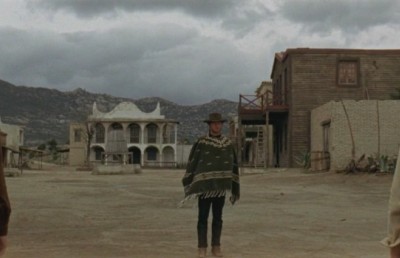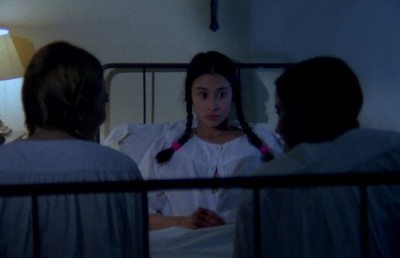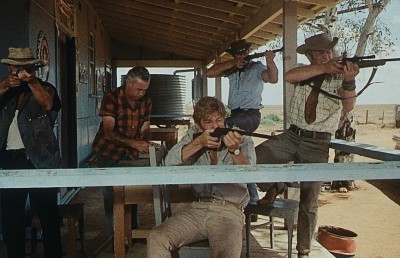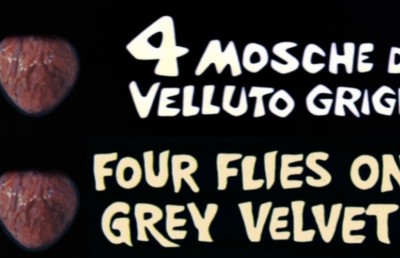Do genres in the cinema really exist and if so, can they be defined?
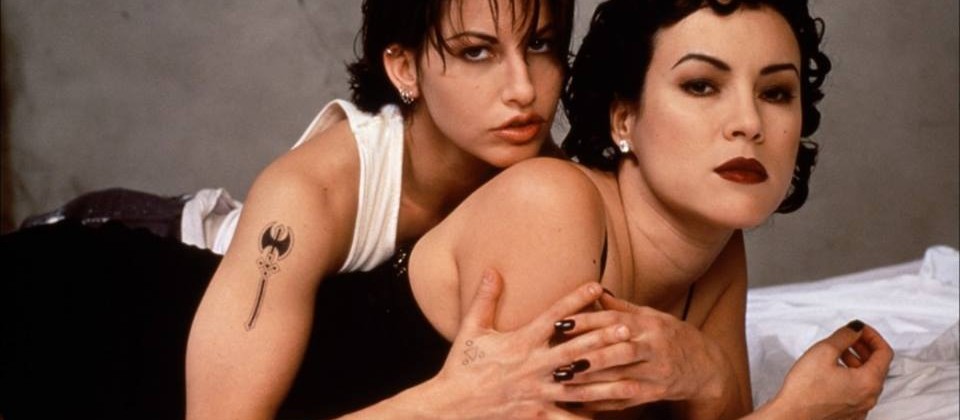
“Genres isn’t a word that pops up in every conversation about films or every review – but the idea is second nature to the movies and our awareness of them. Movies belong to genres much the way people belong to families or ethnic groups. Name one of the classic, bedrock genres – Western, comedy, musical, war film, gangster picture, science fiction, horror – and even the most casual moviegoer will come up with a mental image of it, partly visual, partly conceptual” (Richard T. Jameson, They Went Thataway, 1994, p. IX).
“The master image for genre criticism is the triangle composed of artist/film/audience. Genres may be defined as patterns/form/styles/structures which transcend individual films, and which supervise both their construction by the filmmaker, and their reading by an audience” (Tom Ryall, quoted by Stephen Neale, Genre, 1980, p. 7).
“…genre can be defined as a structural pattern which embodies a universal life pattern or myth in the materials of language… Genre is universal, basic to human perceptions of life” (John Cawelti, The Six-gun Mystique, 1975, p. 30).
As Barry Keith Grant writes in the introduction of his genre reader, “the work of defining film genres is surprisingly difficult and complex’” [1] because “…recognition of the importance of genre in the cinema is a relatively recent development….although chronologically it narrowly predates the early work of auteur criticism.” [2] Grant takes notice that until the late 1940s and early 1950s – when Robert Warshow and genre pioneer André Bazin wrote the first significant essays on film genre (about gangster movies and about the Western) – films were only distinguished by a phrase (for example, ‘a war movie’) “used as a convenient label to give one an idea of what the story was like, what to expect generally from a film.” [3] As before in literature, in painting and in other forms of art, “genre became a critical term, providing another conceptual framework for understanding movies.” [4] A genre classification can also double as a precise commercial study because it evokes certain audience expectations and therefore it allows one to establish classifications, comparisons, balance-sheets, valuations for the future and so on. Although it has been helpful for cinema studies, classifying films in accordance with their genre remains a difficult and risky endeavor because genre ‘impurity’ is by now, some twenty years after the solidification of genre study, a constant characteristic and a usual practice of the cinema as art and as industry.
In his anthology, Rick Altman observes that film classification by genre is the logical continuation of genre classification in literature: in this way, to divide an art into various categories is also to simplify a taunting subject matter by fixing points and giving some useful co-ordinates to the audience. [5]
Edward Buscombe also begins his essay, “The Idea of Genre in the American Cinema,” by going back to literary genre theory: after having formulated three basic questions (the first invoked in my essay title), he wrote that “It seems sensible to start with a brief review of the history of genre criticism in literature, since it is in this context that certain problems [that is, questions about genres] first arise.” [6] Aristotle again is borrowed as the model who, for the first time in his Poetics, developed the notion that there are different kinds of literature. Summarising his essay, we can understand that for Buscombe a proper classification of films by genre does not yet exist, although the ones that we have remain useful. Analysing in detail the case of the Western, Barry K. Grant cites Buscombe, “Edward Buscombe next offers a partial solution to Tudor’s dilemma by theorizing a distinction, adapted from literary criticism, between a film’s “outer forms” (iconography) and “inner forms” (themes) and by discussing their relationship.” [7] Buscombe lists some examples of outer forms (starting from outdoors and indoors) and formal elements which distinguish the Western: for example, deserts, mountains, saloons, jails, ranch-houses and then clothes, tight jeans, black gloves, black hats, guns, colts and rifles, horses and so on. Then, Buscombe compares them with the inner form, that is to say the deep meaning of a film (the theme), or what the director may have wanted to express: and Buscombe observes that the inner form of a Western is, like the inner form of all films, the human element, the people. He writes “Winchester 73 (Anthony Mann, 1950) is not about the gun, which is a mere connecting device to hold the story together. The film, like all films, is about people.” [8]
But returning to Buscombe’s distinction, one can say with some certainty that there are outer forms to distinguish one genre from another one; in fact, if we follow his theory – that all films are about people– then all films should be the same. So, in these terms, what is the difference, for example, between John Ford’s My Darling Clementine, Akira Kurosawa’s The Seven Samurai or George Lucas’ Star Wars? Evidently, we could track down the differences in the sets, costumes, props, dialogues, characters and so on. Otherwise, it is obvious that the scheme of these films is the scheme of a typical Western; but, at this point, is Homer’s Odyssey a Western as well? Probably yes, but probably no: it is epic narrative and there is surely truth in the idea that the Western is a variation (in terms of times, landscapes, characters) of the epic narrative (and not its contrary). As a matter of fact, Sergio Leone, the unquestioned maestro of Italian spaghetti-western (a genre within a genre), said that the greatest screenwriter of all time was Homer. Situations evolve, or are up-dated, but stereotypes –or, better yet, archetypes– always remain the same: the lonely and sometimes unknown hero, the gang of villains, the poor people, the attractive girl, bloody revenge, good versus evil, the final showdown, etc.
Obviously, as we can perceive by intuition, genre classification is a human convention to simplify and clarify the artistic production and the subsequent study of it. And so far as all conventions are created by human beings, it has its good qualities but its limits as well; for example since genre is often a guide to help an audience make a right choice, it can tend to over-simplify the substance of a film. For example, what is Wes Anderson’s The Royal Tenenbaums? A comedy? Yes, indeed, the structure, characters and the director’s vision are those of a comedy, but the film is not only cheerful, weird and funny, it is also tragic, intelligently poignant, melancholic, adventurous, dramatic, moving and something else. In this sense it is comforting for a possible viewer to know that one film is, after all, a comedy; but, on the contrary, if this viewer desires and expects a comedy, will he/she be satisfied with The Royal Tenenbaums, a most unconventional and atypical comedy? So one can say that genres exist in the cinema, and they can be useful for commercial purposes, but an intelligent cinéphile (and a standard spectator as well) should not be too influenced in their choice and in their judgement about a film’s genre properties.
At the end of his essay, Buscombe talks about the Western but leaves open the question about other film genres: “And if the Western originates in history and is a response to it, what about the musical? Or the horror film? Can we possibly evolve a theory to fit them all?” [9] And to add to his dilemma: what about film noir?
This latter question is still more complex because, as Raymond Durgnat pointed out and then as Paul Schrader hit back in his splendid and lucid essay “Notes on Film Noir” (included in Grant’s anthology Film Genre Reader),
Film noir is not a genre….It is not defined, as are the western and gangster genres, by conventions of setting and conflict but rather by the more subtle qualities of tone and mood. It is a film “noir”, as opposed to the possible variant of film “grey” or film “off-white.” Film noir is also a specific period of film history, like German expressionism or the French New Wave. In general, film noir refers to those Hollywood films of the forties and early fifties that portrayed the world of dark, slick city streets, crime and corruption.
Film noir is an extremely unwieldy period. It harks back to many previous periods: Warner’s thirties gangster films, the French “poetic realism” of Carné and Duvivier, Sternbergian melodrama, and ultimately German Expressionist crime films (Lang’s Mabuse cycle). Film noir can stretch at its outer limits from The Maltese Falcon (John Huston, 1941) to Touch of Evil (Orson Welles, 1958), and most every dramatic Hollywood film from 1941 to 1953 contains some noir elements. There are also foreign off-shots of film noir, such as The Third Man (Carol Reed, 1949), Breathless (Jean-Luc Godard, 1959) and Le Doulos (Jean-Pierre Melville, 1963).” [10]
Continuing his personal, very interesting inquiry, Schrader maintains that, “A film of urban nightlife is not necessarily a film noir, and a film noir need not necessarily concern crime and corruption. Since film noir is defined by tone rather than genre, it is almost impossible to argue one critic’s descriptive definition against another’s. How many noir elements does it take to make a film noir? Rather than haggle about definitions, I would rather attempt to reduce film noir to its primary colors (all shades of black), those cultural and stylistic elements to which any definition must return.” [11]
Evidently, Paul Schrader knows the film noir universe very well if we consider that he is instrumental (as screenplayer and director himself) in the rebirth of the noir style, obviously updated and revisited with a modern and metropolitan shading. If we think of films such as Taxi Driver, Hardcore, American Gigolo, Light Sleeper or Affliction, we can say, without too many qualms, that they are modern versions of typical film noir themes and styles, a kind of paraphrase: in fact, I would add that they draw their inspiration from Myth and the Epic form. Rather than accepting the conventional trait of the term ‘genre’ in relation to cinema Schrader suggests it may be more useful, as Buscombe did, to distinguish films by style and theme rather than genre. But since with film noir it is often the conventions that become popular, we tend to easily accept film genre classification.
In any matter, classification is also useful as a mirror of the society in which certain products were realised. For example, Paul Schrader begins his seminal essay on noir with this statement: “In 1946 French critics, seeing the American films they had missed during the war, noticed the new mood of cynicism, pessimism and darkness that had crept into the American cinema” (p. 169). Noir reflected the worrying and unstable World War II period: the loss of certainties, a climate of paranoia and claustrophobia, apprehension over the future, social agitations, post-War economic conditions, etc., but also of a certain hope that came with the growing independence women gained, the thrust towards progress, the passion for the past and present, etc.
However, critics often consider film noir as a genre because it is divided into such a great variety of important sub-genres which we would otherwise ignore: psychological noirs, fantasy noirs, gangster noirs, noirs with private eye, noirs with a dangerous and mortal ménage a trois, Black Widow noirs, detective noirs, the hard-boiled tradition, the pulp fiction tradition and so on. In this way, as Schrader suggests (pp. 175-177), we can only outline “a reservoir of film techniques…themes and casual elements.”
As Rick Altman demonstrates in his long essay, [13] the term ‘noir’ is a French term used for the first time in a series of articles written in 1946 by Nino Frank and Jean-Pierre Chartier, which borrowed the term from “the narratives of Gallimard’s proprietary ‘Série noire,’ a cycle of particularly bleak tales in the popular French roman policier (detective novel) genre.” In this way, those film that were simply called, at the beginning, ‘murder melodrama’ became, thanks to the French expression roman noir, film noir, where the term ‘noir’ was used, at first, “simply as a descriptive adjective defining film with a gloomy atmosphere.”
Billy Wilder’s Double Indemnity, one of the greatest examples of film noir, was just a simple murder melodrama: but if we concur with Schrader’s classification, we immediately notice its noir elements (the charming dark lady, with a seductive little bracelet on her ankle; the man in the street who loses his mind over her and who tells us in voice over about the affair; the third man, that is her natural husband; the inevitable destiny; the spreading pessimism toward human beings and relationships; a modern, symbolic value given to money; an eternal chiaroscuro which pervades objects, sets and characters; a strong sense of death and moral and physical corruption. But we must consider that Double Indemnity is, after all, almost sixty years old; what about a recent example of film noir, where ‘contamination’ between genres is surely stronger and more definite? What about, for example, the Wachowski brothers’ Bound? Bound is a perfect example of genre contamination: indeed, the Wachowski brothers take a common 1940s noir plot and bring it up-to-date in terms of style and theme. If the moral is always the same (money makes the world go round), its presentation is completely different: in Bound there are two ‘dark’ lesbians who, at the end, survive and escape with the loot.
But it is also the graphic elements that amaze in Bound: the directors arrange voluptuous camera movements, fetishistic close-ups, acrobatic long-takes and an obsessive research for a choreographic mise-en-scene and art direction. Evidently, they also draw inspiration from David Lynch’s absurd touch and from Dario Argento’s voyeuristic visual talent (for example, the scene in which the camera rapidly follows the phone’s wire, bends included). If one also factors in the black humour and the intelligent irony which pervade the film, then what, exactly, is Bound? Simply a noir? Or is it a thriller, a parody, a detective movie or a black comedy as well? If we analyse the unnatural and hyper-realistic scene of the Mafia boss’ death, what should we deduce? But Bound, however exaggerated, affective, self-aware and self-gratified, is also ingenious and brilliant because, fundamentally, it re-invents the basic structure – or dare I say grammar – of a typical film noir. The Wachowski brothers don’t look for an exact reconstruction of the noir imaginary and universe as, for example, the Coen brothers have in some of their movies (Blood Simple, The Man Who Wasn’t There); instead they operate a redefinition of the genre, establishing its code, its rules and its peculiarities. We can now hazard a tentative response to the initial question proposed by Buscombe: genres do not really exist in the cinema, but it is useful and necessary —for critics and audiences— that they do. But if we accept their existence, we should not define them with utter precision. Which in the end is welcome because a rigidly radical classification, one which could theoretically or practically (industry and audience pressure) influence a director’s thought process, would condemn the cinema (or whatever form of art) to a mortal sterility. And we would cease to have such noir-like films as Bound, Affliction, Memento, ??Mulholland Drive??…
Endnotes
1 Barry K. Grant (ed.), Film Genre: Theory and Criticism, The Scarecrow Press, Inc. Metuchen, N.J. & London, 1977, page 1.
2 Ibid.
3 Ibid.
4 Ibid
5 Rick Altman writes: ‘In many ways, the study of film genre is no more than an extension of literary genre study… Clearly, much that is said about film genre is simply borrowed from a long tradition (from Aristotle to Roland Barthes) of literary genre criticism’ (Film/Genre, BFI Publishing, London, 1999, p. 13).
6 Edward Buscombe, “The Idea of a Genre in American Cinema,” Barry Keith Grant, ed. Film Genre Reader, University of Texas Press, Austin, 1986), pp. 11.
7 Barry Keith Grant, Film Genre Reader, University of Texas Press, Austin, 1986, p. XIV.
8 Edward Buscombe, “The Idea of Genre in the American Cinema,” Barry Keith Grant, ed. Film Genre Reader, University of Texas Press, Austin, 1986), pp. 15.
9 Edward Buscombe, “The Idea of Genre in the American Cinema,” Barry Keith Grant, ed. Film Genre Reader, University of Texas Press, Austin, 1986), pp. 24.
10 Paul Schrader, “Notes on Film Noir” Barry Keith Grant, ed. Film Genre Reader, University of Texas Press, Austin, 1986), pp. 169-170.
11 Paul Schrader, “Notes on Film Noir” Barry Keith Grant, ed. Film Genre Reader, University of Texas Press, Austin, 1986), p. 170.
12 Paul Schrader, “Notes on Film Noir” Barry Keith Grant, ed. Film Genre Reader, University of Texas Press, Austin, 1986), pp. 175-177.
13 Rick Altman, Film/Genre, BFI Publishing, London, 1999, pp. 60-61.
Bibliography
Rick Altman, Film/Genre, BFI Publishing, London, 1999.
Barry K. Grant (ed.), Film Genre, The Scarecrow Press, Inc. Metuchen, N.J. & London, 1977.
Barry K. Grant, Film Genre Reader, University of Texas Press, Austin, 1986
Cawelti, John. The Six-gun Mystique. Bowling Green Ohio: Bowling Green University Popular Press, 1975.
Jameson, Richard T. ed. They Went Thataway. ed.. San Francisco : Mercury House, c1994.
Kaplan, E.A. Looking for the Other, Routledge, New York & London, 1987
Kaplan, E.A. (ed.), Women in Film Noir, BFI Publishing, London, 1978
Morando Morandini, Dizionario dei film 1999, Zanichelli, Bologna, 1998
Neale, Stephen. Genre, BFI, 1980.


